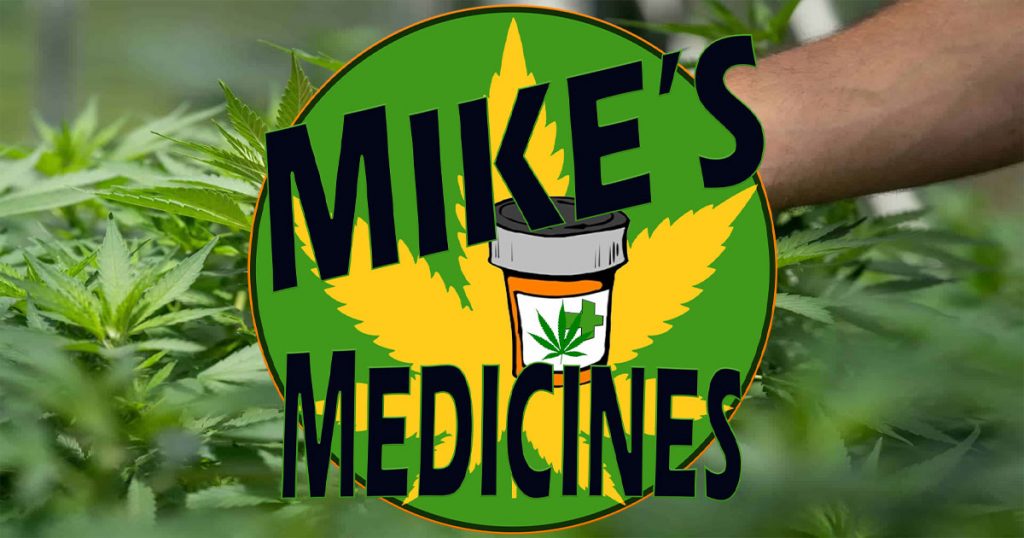'The Cannabis Association for Responsible Producers' was created with specific purpose:
There sure has been a lot of stink about the smell of growing cannabis coming from many different areas of the world, but the focus of ongoing negative media about this has been on Santa Barbara, California – specifically in Carpinteria. I can understand people not wanting to smell agricultural grows of any type – but this certainly hasn’t stopped the clouds of manure dust one may drive through on their way through the central valley in the same state. As we pass other types of agriculture growing, or live near them, it’s a way of life to have that type of odor upon you – if you desire it. The issue in Santa Barbara is that the people were there first. While both sides of this debate have merit, my personal belief is that some with issues over smell would think differently if they read the research on ‘forest bathing’ – an activity that allows the human body to absorb various therapeutic compounds from nature known as terpenes.

Some that lodged a complaint about the ‘smell of skunk’ may not understand that this type of legal agriculture actually has a smell with countless health benefits – unlike the torridity of a summer drive by a cattle ranch which leaves the nasal cavity a bit disturbed, to say the least – but no media sources are interested in anyone’s complaints on that subject. Generally speaking, there are a plethora of reasons that the odors emitted from the growth of cannabis should be contained. With all the ongoing media that’s less than positive regarding growers that have licenses in an area in which a municipality allows cannabis growth, the response by the team at CARP growers has been beyond amazing. I happened to meet one of the leaders of this organization yesterday at the grand opening of the Farmacy Santa Barbara – a recreational dispensary that is owned by the very leader of this organization.
I found myself speaking with someone who cared about the odor abatement issue and people that have issues with smell. A very amazing individual that opened my eyes to the fact that cannabis growers must jump through hoops to gain the same respect as the farmer that grows strawberries or the dairy farmer who’s definitely causing smelly circumstances. What I found even more intense, as a blogger and journalist, was that this organization goes beyond a simple mission of growing clean cannabis without a local uproar, they’ve gathered some intense information to educate consumers, growers, and even educators on their own educational blog – material I believe all should read.
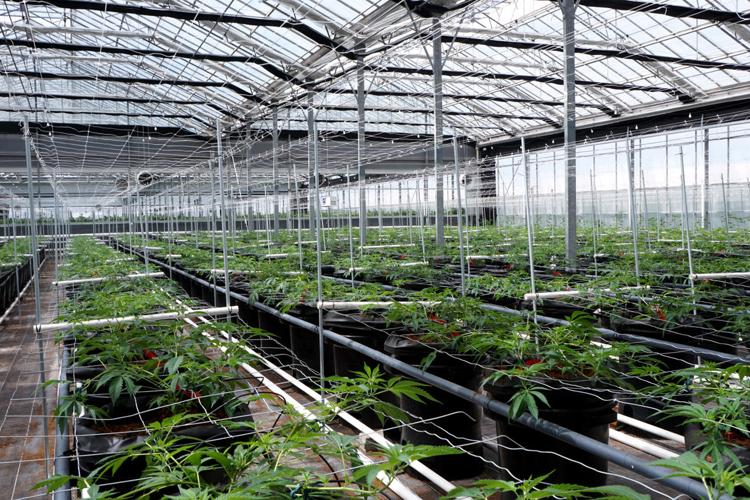
Cannabis Business Times reported Graham Farrar, founder of Glass House Farms, said that he and his team worked closely with Santa Barbara County to craft an odor control ordinance that all licensed businesses must follow. The public was involved, too.
“There was quite a bit of community involvement,” Farrar says. “Odor’s a tough one, right? It’s challenging. Santa Barbara [County] is unique in that there’s a 10-acre greenhouse and then a fence, and then somebody’s backyard. In a number of places, the residential and the greenhouse [business] butts up right next to each other. And so, one of the points with the community that had to be worked through, and probably the highest [level of] friction, was the odor from the cultivation. Most of the stuff here is a continual harvest. So, it’s not like it just happens once or twice a year; it’s always planted being harvested, and some of the neighbors were not fans of the smell. Odor control is something that we lobbied along with the community to have as a requirement for the ordinance.”
One element that has helped to shape the region’s cannabis industry: “You can’t grow outdoors within two miles of the urban-rural boundary,” Farrar says, “so there’s not any outdoor cultivation in our neck of the woods because they’re worried that you wouldn’t be able to mitigate the odor.”
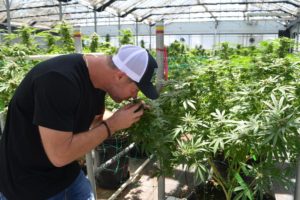
(CARP Growers president and cannabis farm operator Graham Farrar smells his “jellyfish” strain at Glass House Farms in the Carpinteria Valley. Photo credit: Giana Magnoli / Noozhawk photo)
It’s important to note that along with Graham Farrar, the CARP growers board also includes Kyle Hardy, Anthony Stall, Winfred Van Wingerden, Mike Palmer, Hans Brand, and Tristan Strauss. There are numerous others that have joined together and make this nonprofit thrive as an outstanding example within our national cannabis industry with their response to consumer and community needs.
Last year, Coastal View released an article that sums this organization’s commitment to the community quite quickly: “New association endorses Cannabis Tax Measure to raise revenues for enforcement”
When Proposition 64 passed at the ballot box in November of 2016, paving the way for the sale and use of recreational marijuana, Carpinterians in ever-increasing numbers began raising questions about the skunky smell, environmental impacts, and cultural shifts that the booming industry would bring. The conversion of numerous greenhouses in the Carpinteria Valley from cut flowers to medicinal and adult-use cannabis has been a complex local issue. At present, 30 percent of marijuana cultivation in the county is said to be in the Carpinteria Valley. While the county and city are both grappling with how to regulate state-legalized marijuana commerce, as well as create and enforce local ordinances, including pressing questions of taxes and fees, a group of cannabis growers in the Carpinteria Valley has formed a professional association which, according to their press release, will guarantee that its members follow the rules and conduct business as mindful members of the Carpinteria community.
On May 22, (2018) the Cannabis Association for Responsible Producers (CARP Growers) announced their formation as a trade association that will operate under 501c(6) nonprofit status. The organization also launched a new website, carpgrowers.org/.
According to a press release from the association, CARP Growers members will adhere to all state and local rules, other strict environmental guidelines that go beyond regulations, and a code of ethics designed to ensure member farmers are at the forefront of compliance and setting best practices for the emerging industry.
“We want our industry to play a positive role in the community, in the same way, our businesses always have,” said Sofie Van Wingerden, CARP Growers member. “When we diversified into cannabis, our plan was and always has been to continue to operate in cooperation with our neighbors.”
Odor abatement has been a top priority among growers joining the association. Membership requires the installation of a vapor-phase odor control system along the perimeter of all grow structures. These systems use a biodegradable and nontoxic vapor to neutralize cannabis odors and prevent them from escaping the premises.
According to a statement issued by CARP Growers, the association supports county enforcement of the strict cannabis ordinance and endorses Measure T 2018, the Santa Barbara County Cannabis Tax ballot measure. The measure will appear on the June 5 primary ballot, and if passed by a majority of voters, will tax the cannabis industry, providing additional resources to enforce the county’s comprehensive regulations, including odor control. CARP Growers contends that enforcement measures “will drive out any growers not following the rules designed to protect the community.”
“We are ready to support the county and the community by paying to enforce regulations,” said CARP Growers Director Graham Farrar, owner of Glass House Farms. “If voters approve the measure, the cannabis industry pays for enforcement, not residents.”
CARP Growers member Ivan Van Wingerden stated, “We absolutely want to be well represented as an industry, and part of that is giving back to causes we believe in. At heart, we’re farmers in Carpinteria. We’re connected to this community.”
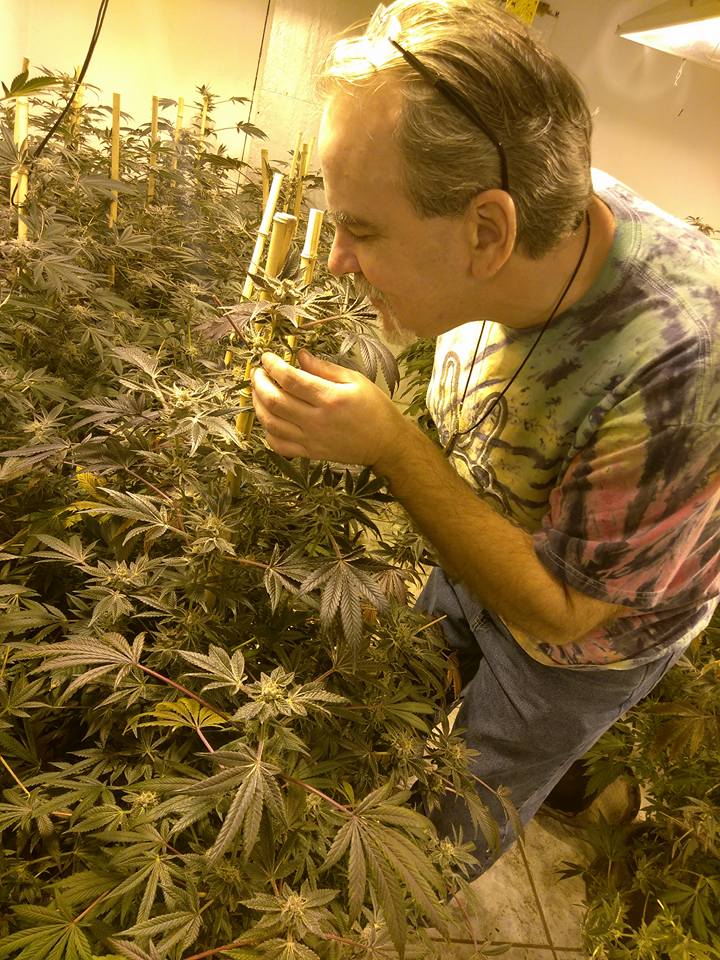
Back in the days of Prop. 215 in California, growers I’d visit didn’t worry about the smell. But back in the days of this photo – few were as cautious in keeping a clean environment within grows like they are today. If I visit an indoor grow today like the one I’m at here back in 2016, I’d likely have to wear something over my clothes in order to not ‘infect’ the environment. Cannabis is now one of the cleanest grown agricultural products known on this earth!
The following comment was back in 2018, but negativity in media continues in regards to the smell. Being reasonable may be necessary as a new industry responds to the needs of residents that live in the area. Changing times means there are stalls in the creation of ordinances and implementing them – it doesn’t mean a new industry wants to stink up the place! There have been some complaints, so to be fair, I’ll go ahead and print one of them:
The New York Times, late last year, featured Michael Wondolowski, who brought up valid points. They reported that Mr. Wondolowski lives a half-mile away from greenhouses that were originally built to grow daisies and chrysanthemums but now house thousands of marijuana plants, part of a booming — and pungent — business seeking to cash in on recreational cannabis, which has been legal in California since January. “If someone is saying, ‘Is it really that bad?’ I’ll go find a bunch of skunks and every evening I’ll put them outside your window,” Mr. Wondolowski said. “It’s just brutal.”
Being a responsible medicinal cannabis consumer and researcher, I understand his complaint. After all – if you’ve never liked the smell of cannabis obviously you wouldn’t want it at your front porch every day. Most of us that have up close and personal relationships with the plant love the smell and it’s literally our dream to have his nightmare – but to each their own. He has his rights, and growers have their rights. At some point, it requires humanity and the realization that individuals like Mr. Wondolowski need the response of people like CARP growers. So many have complained about the smell – but what we’re witnessing now is an intense amount of funds spent on the abatement of odors. Of course, this means costs go up to the consumer and that part bothers me as the dairy farmer can still stir up a stink and make the same, so it seems a tad more than discriminatory towards an industry already being pummeled by regulation that’s overwhelming. As CARP growers continue to make efforts to neutralize what I consider a beautiful smell – they must be applauded for this as the winds in this country don’t make that a simple task.
Please visit their website for more information about this organization that is known to give – check out what they did a few months ago as reported by Coastal View with the headline “Cannabis Growers Support Relay For Life”.
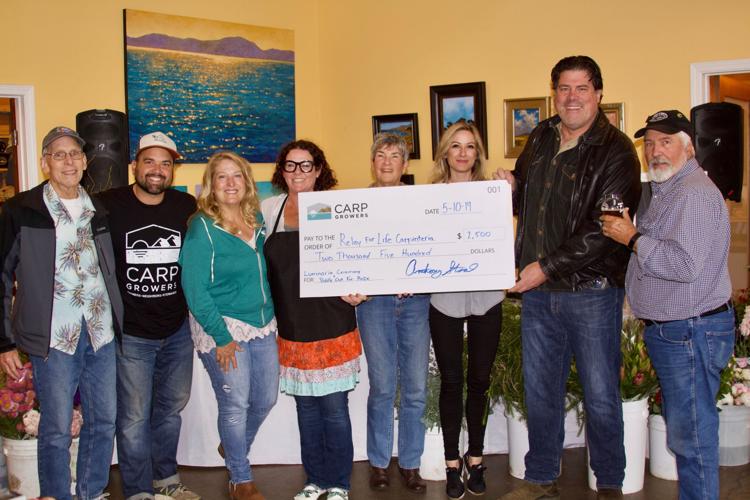
Now that’s what I call to care for the community. The story of CARP growers and the smell of Cannabis will likely be an ongoing debate but there’s been quite a bit done to try to stop the problem. As much as some may think the cannabis industry is impeding on them, it’s more of a return of what has been medicine for thousands of years as well as the return of cannabis to the open market as it was in America less than 100 years ago. Many that still are hesitant regarding the plant don’t realize their not so ancient ancestors were using tinctures and so much more in the 1800s and on up until the removal of cannabis from the U.S. pharmacopeia, which didn’t occur until 1942. It wasn’t so long ago that Cannabis was mainstream – and with that came responsibilities. In the early 1800s, many are unaware, it was a government mandate that all American farmers grow hemp. These are the facts of our history as a not-so-old country – so as a new industry emerges there will be a continued awakening as to the fact cannabis has literally always been a staple to humankind. But as far as to use or smell of it, that would be a personal choice and we all should care about others if we want their support in our movement to be able to freely use the plant’s therapeutic abilities or to just smoke a joint if that’s what one wishes to do!
-Mike Robinson, Cannabis Patient and Founder, Global Cannabinoid Research Center. But, most of all, Genevieve’s Daddy
Sign up to receive informative and exciting email updates from Mike's Medicines!
You can sign up for our mail list here:
Didn't find what you are looking for?
Find exactly what you want to when you want it.
Browse through our archives by date, category or by entering a topic in the provided search field.
Archives
Categories
More to come as we have time to add them – there’s 100’s of additional publications!

We’ve made it easy for you to read Mike’s Medicine Blog or visit any of the Menu items right from here. It is that simple! Explore Mikes Medicines by clicking on the button below:

Read about how Cannabis Compassion and love created Mike’s beautiful family, the Cannabis Love Story inspires millions daily:
Genevieve’s Dream is all about her love for the Carousel coupled with her Cannabinoid Medicine journey – read more and make contact if you’re interested in collaborating with Mike!
The Global Cannabinoid Research Center is a trusted source for education, R&D, and more – make contact with us to collaborate.


